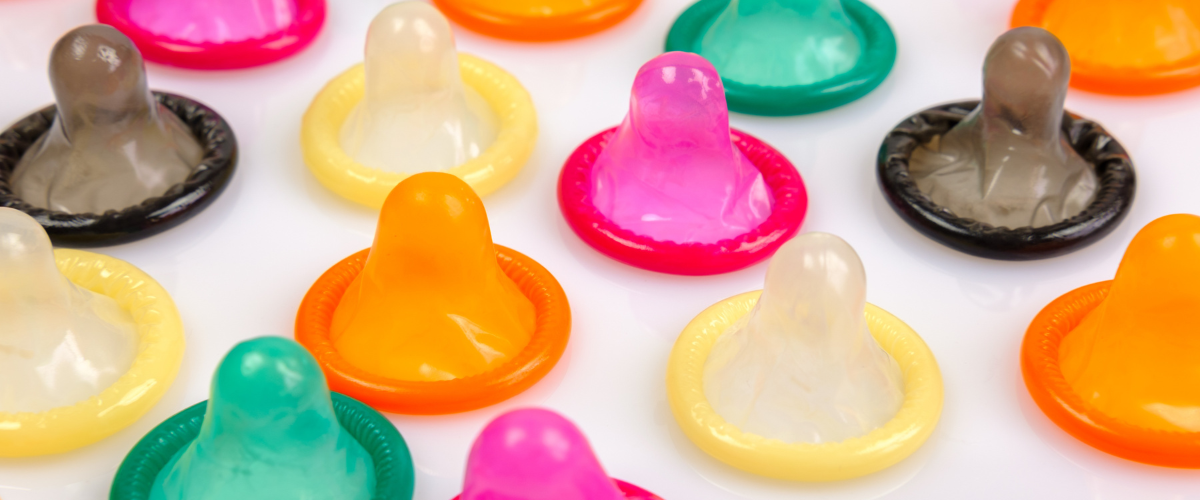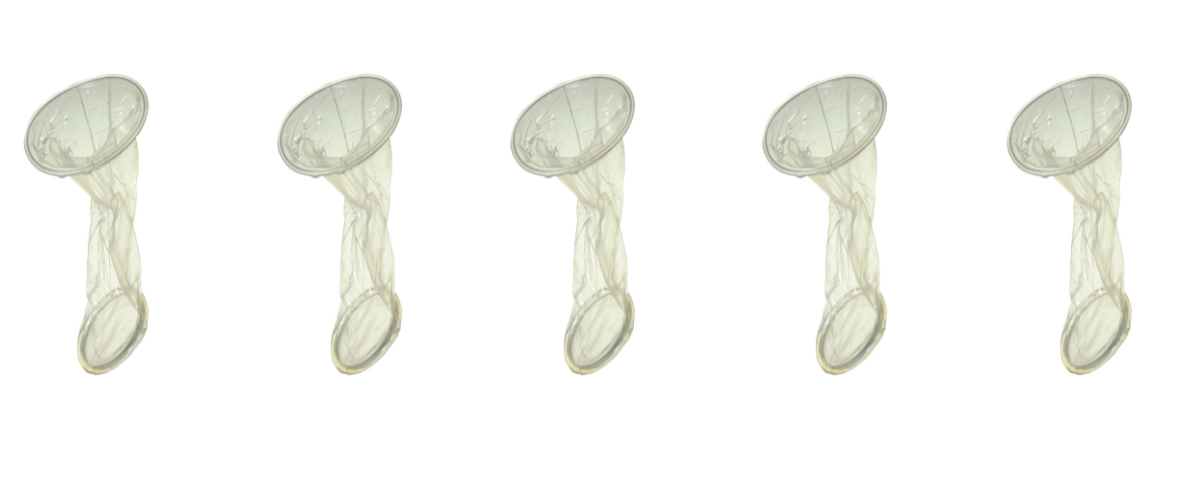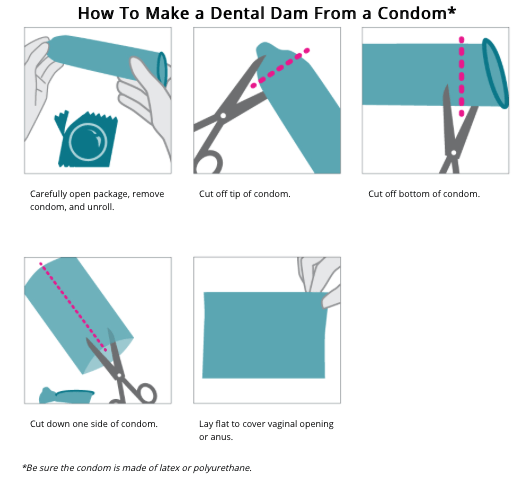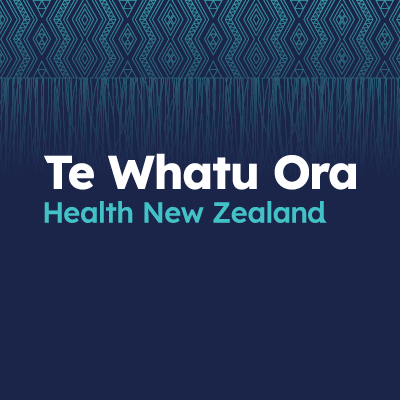Condoms, dental dams and how to use them
Condoms and other barrier methods are essential for preventing the spread of STIs. They can significantly reduce your risk of infection, even though they do not provide 100% protection against all STIs.
Condoms create a barrier to prevent infection and sperm from passing between people during sex. They can be used for vaginal sex, anal sex and oral sex.
There are two types of condoms -
external and
internal condoms. Dental dams can also be used for oral sex.
External condoms
External condoms (or more commonly referred to simply as 'condoms') are made out of fine rubber and can be rolled over the penis (or sex toys).

-
Should I always use a condom?
Use a condom every time you have vaginal or anal sex to minimise the risk of getting or passing on STIs.
Consider using condoms for oral sex, especially if you have lots of sexual partners.
Even if you don't use a condom every time, or for every type of sex, use one as often as possible—this is safer than not at all. If you have occasionally not used a condom that does not mean it is not worth using a condom every time in future.
-
Do condoms work in preventing STIs?
Bacteria, or a virus such as HIV, cannot pass through unbroken rubber! So if used correctly, condoms will prevent the spread of a virus such as HIV. Condoms also reduce your chance of catching chlamydia and gonorrhoea. Remember, some STIs can be transmitted by contact with areas that can’t be covered by a condom, so using a condom cannot guarantee that you will not catch an STI.
-
Do condoms work in preventing pregnancy?
Condoms greatly reduce your chance of getting pregnant. Studies show that if 100 people with a vagina used condoms every time they had sex for one year, only two of these people would get pregnant.
-
What are the risks of condoms?
The greatest risk of using condoms is that they will not work properly if they have been damaged by:
- heat from living in your pocket for weeks;
- tearing open the packet and piercing the condom at the same time;
- having passed the expiry date.
The other risk is that it is not used properly, for example:
- not put on soon enough;
- not used in conjunction with a lubricant to prevent tearing;
- not held on during withdrawal.
Practice putting condoms on a banana in private if you are embarrassed, so you know what you’re doing and feel confident using them with your partner.
Also, remember! If you are being treated for thrush with antifungal treatment (such as Canesten), this can damage the rubber of a condom and it may not work properly.
-
What should I do if the condom tears during sex?
If you discover a tear in your condom after sex and:
Are worried about getting pregnant:
- visit your nurse, doctor, Sexual Wellbeing Aotearoa Clinic or sexual health clinic and consider taking the emergency contraceptionive pill. The pill option is best taken within 72 hours, but it can be taken within 96 hours of unprotected sex (including if there was a broken condom or if no other form of contraception was used), however it works by delaying ovulation (the release of your egg) and if you have already ovulated the emergency contraceptive pill (ECP) will not be effective. The alternative emergency contraceptive is the copper IUCD which can be inserted up to 5 days post unprotected sex.
- some pharmacies provide the ECP over the counter without you having to see a nurse or doctor.
Are worried about STIs:
- visit a sexual health clinic if you are concerned about STIs for advice from a health professional.
-
Where can I get condoms?
The cheapest way to get condoms is on prescription from your family doctor or Sexual Wellbeing Aotearoa clinic. You can also get them from sexual health clinics and youth health clinics. They can be bought at supermarkets, pharmacies, dairies, pubs, clubs and public toilets. They’re everywhere!
The Burnett Foundation Aotearoa promotes staying safe by using condoms and offers a combination of tools to gay and bi guys to prevent HIV transmissions. Guys (cis or trans) who have sex with guys can order condoms for free from their site and they’ll be mailed in unmarked envelopes.
-
How much do condoms cost?
The cheapest way to get condoms is from your Sexual Wellbeing Aotearoa Clinic, sexual health clinic or youth health clinic, or on prescription from your health care provider. Anyone under 22 years can get a prescription for 144 condoms for $3!
Clinics will often give rangatahi a box of condoms for free. So no excuses! Otherwise, expect to pay $12–$20 for a pack of twelve from the supermarket or online.
Also, the Burnett Foundation Aotearoa promotes staying safe by using condoms and offers a combination of tools to gay and bi guys to prevent HIV transmissions. Guys (cis or trans) who have sex with guys can order condoms for free from their site and they’ll be mailed in unmarked envelopes.
-
Which condoms should I use?
The main, reputable brands are those available at Sexual Wellbeing Aotearoa Clinic (or online shop), pharmacies and supermarkets. Check that any novelty, flavoured or coloured condoms do have the expiry dates on them. Condoms marketed in New Zealand must comply with ISO 4074:2002(E) standard.
-
Does size matter?
Yes, condom sizes do matter! Make sure you or your partner use a condom of the right size. Condoms are more likely to break if they are too tight. The girth (thickness/width) of the penis may be more important than penis length. Try a range of condom sizes (such as Trim, Standard, Large/XL and Superking/XXL) to find which fits you best, or measure around your erect penis using a strip of paper to find the correct diameter of condom for you.
Internal condoms
As with external condoms described above, internal condoms help protect against unwanted pregnancy. They also stop sexual fluids being transferred between sex partners which means that they provide protection against some STIs.

-
What is an internal condom?
Internal condoms are like other condoms except they are made of nitrile polymer and fit inside the vagina instead of covering the penis. It is a tube with flexible rings at each end which help keep the condom in place - one end is closed and the other is open.
Internal condoms are latex-free so can be used by people with a latex allergy.
-
Do internal condoms work in preventing STIs?
Internal condoms line the vagina and protect against sexual fluids being transferred between partners which protects against STIs.
-
Do internal condoms work in preventing pregnancy?
Internal condoms line the vagina and protect against unwanted pregnancy by stopping the sperm contained in semen coming into contact with a vagina.
-
Where does the internal condom go?
The internal condom is inserted deep into the vagina before sex with the open end remaining outside the vaginal opening.
Internal condoms can also be used during anal sex.
-
What should I do if the internal condom slips out of place during sex?
If you discover that your internal condom has slipped and got pushed up into the vagina, or that the penis has gone between the condom and the vagina, and:
Are worried about getting pregnant:
- visit your nurse, doctor, Sexual Wellbeing Aotearoa clinic or sexual health clinic for the “morning after” pill (emergency contraceptive pill - ECP) within 72 hours, if you are concerned about pregnancy.
- some pharmacies provide the ECP over the counter without you having to see a doctor.
Are worried about STIs:
- visit a sexual health clinic if you are concerned about STIs for advice from a health professional.
-
Where can I get internal condoms?
Internal condoms are not always available at every contraception and sexual health clinic and can be more expensive to buy than other condoms.
They can be purchased from Sexual Wellbeing Aotearoa clinics (including their online shop) and are also available at some shops.
-
How easy are internal condoms to use and are they safe?
If you can use a tampon, you will likely be able to use an internal condom. Almost everyone can use internal condoms safely.
Dental dams
A dental dam is a thin, flexible piece of latex that acts as a barrier. It can placed over the vulva or the anus during oral sex to minimise skin-to-skin contact, or contact with bodily fluids, and therefore reduce the risk of getting or passing on an STI.
-
What are dental dams?
Dental dams are a sheet of latex that acts as a barrier so fluids can’t be transferred between people. When used correctly, they are the best way to stop the spread of STIs through oral sex (mouth-to-genital and mouth-to-anus (rimming)), much like condoms—in fact you can even make them out of condoms!
-
When should I use dental dams?
Safer sex measures usually focus on penetrative sex (full sex), which is why condoms are so readily available. But that’s not the only type of sex that spreads bacteria and infections.
It’s possible to get or transmit STIs through oral sex as well. This is where dental dams are a great form of protection and should be used during mouth-to-genital or mouth-to-anus (rimming) oral sex. Using dental dams reduces your risk for STIs while still allowing for clitoral or anal stimulation.
-
How do I use dental dams - where do they go?
Depending on which type of oral sex you are having, dental dams can be:
- held across the vagina.
- held across the anus (bum hole or back passage).
- wrapped around the balls.
This creates a barrier between the mouth and the vagina or anus to protect you and your partner/s from STIs.
Each dental dam should only be used one time, and don't flip it (turn it over) - treat it like a condom. If you use the same dental dam and move bewteen oral, genital or anal sex, you may spread bacteria (bugs) between these sites.
Dental dams can be used with lubricants* for increased sensation. You can put a bit of water-based lubricant (lube) on the side of the dental dam that touches the skin. This helps to keep the latex from sticking and can give the dam a see-through effect.
*You should only use water or silicon based products with latex dental dams (e.g. KY jelly, etc.). Do not use oil-based products like vaseline or baby oil, as they damage the dams. If you are using polyurethane dams (latex-free) you can use oil-based products.
-
Do dental dams work in preventing STIs?
Dental dams, when held across the vagina, anus (bum hole or back passage) or wrapped around the balls, prevent fluids from being transferred between people during oral sex. This includes mouth-to-genital and mouth-to-anus (rimming) oral sex. This reduces your risk for sexually transmitted infections (STIs) including:
-
When can I get dental dams?
Dental dams are not always available at every contraception and sexual health clinic, but the good news is that you can make them from condoms!
To DIY:
1. Tear open the condom package and unroll it.
2. Snip the tip and the rolled ends.
3. Cut along one side of the condom.
4. Roll out the latex sheet and use it in place of an official dental dam.
-
How safe are dental dams?
Dental dams are safe to use. If you or your partners have a latex allergy, make sure you make your dental dams from latex-free condoms.




